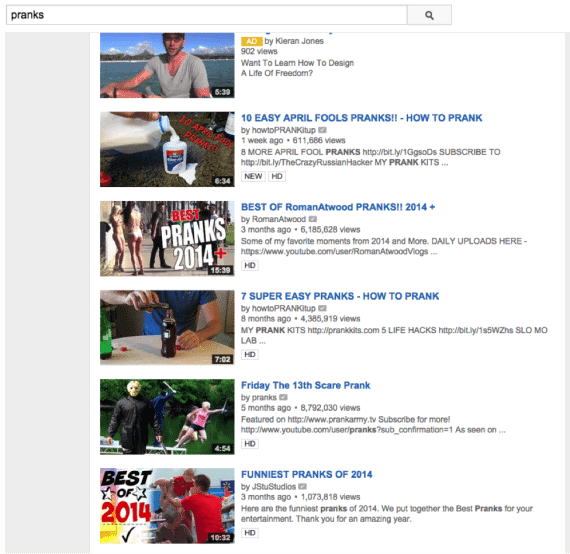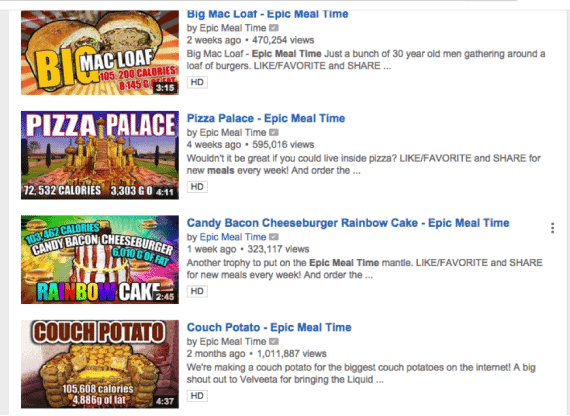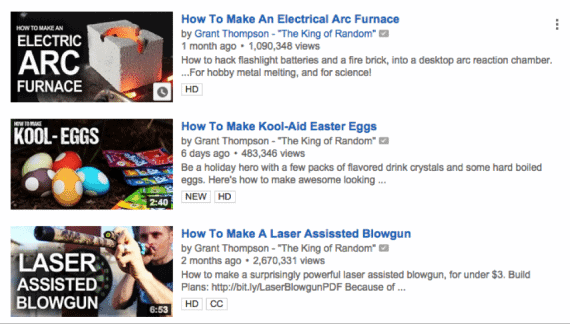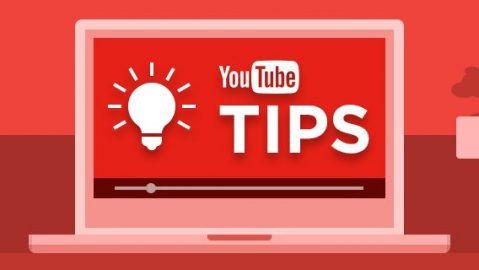It can be hard to start on YouTube these days but if you nail the basics you will give yourself a huge head start.
1. Determine Your Goals for the Channel
First, it’s important to decide if you even want a YouTube channel for your store. It’s a lot of work, but the benefit to your business could be astounding.
Having a YouTube channel affords you a free method of marketing to potential customers. Think of it just like an email list. Your YouTube subscribers are signing up to be notified when you release new video content. This can be a powerful force if built and maintained correctly.
It has taken years and over 350 videos to reach our nearly 10K Subs. However, our website traffic is comprised predominantly of visits from YouTube as well as direct visits. In fact, these two segments account for 50 percent of our traffic. Add in organic search traffic (thank you universal search results) and nearly 75 percent of our traffic is “free.” We spend very little on traditional Internet advertising because we’ve built a name for ourselves via YouTube.
Now that you’ve decided to create a YouTube channel, your second step is determining what you want to achieve with your channel. Are you trying to build loyalty with current customers or obtain new customers? What type of customers are you looking for on YouTube? Experienced or newbies? Until you can answer these questions, you can’t start creating content.
Let’s assume that you sell dollhouse supplies. Do you want to offer tips-and-tricks videos? Do you want to showcase new products with video? Do you want to highlight amazing dollhouses from around the world? You may wish to do all of these things, but it’s probably best to have a laser-like focus when you begin.
Determining the focus of your channel should be the result of researching other channels on YouTube as well as your innate knowledge of your business. So, don’t duplicate what other channels are doing. Think about the common questions your customers ask. They’re probably also looking for these answers on Google (which loves to show videos from YouTube in its search results). Use these resources to refine the purpose of your channel.
2. Invest in Ideas and Concepts, Not Equipment
You probably already own all of the equipment you need to start your YouTube channel: a smartphone. But what you probably desperately lack is a great idea and a great concept for your channel. You should spend a ton of time figuring out your niche.
Start by writing down 50 to 100 ideas for videos. Think deeply about the titles of these videos. Type them into YouTube’s search box to see what comes up. See what your competitors are doing. See what hobbyists are doing. Figure out where they’re falling short and devise a way to create better content.
Content is king. Nothing is more important. Launching your YouTube channel is akin to launching a new business. Treat it as such.
3. Keep Your Videos As Short As They Need To Be
In today’s world, viewers want bite-sized chunks of information. Unless you really know what you’re doing, you won’t be able to get away with videos more than 2 minutes long, unless you deliver VALUE.
Remember that when you’re starting out, viewers don’t know you. All they have to judge whether they’ll click to watch your video is the title, thumbnail, and length of the video.
4. Design Thumbnails That Pop
Thumbnails, along with the title of your video, are really all you have to market your video (until you start to build an audience).
Sure, YouTube uses your video’s description and tags in its search index. But on the results page, where you’re competing with all of the other videos available for viewers to watch, your title and thumbnail are all you have to separate yourself. So make sure your thumbnail stands out.
Check out the YouTube search result for “pranks.” When I do this, I am drawn most to the thumbnails with the large text on them.

Thumbnails with larger text stand out in YouTube’s search results.
Other tips include using a face as well as designing simple images with only a few elements, a solid (and bright) background color, and a solitary foreground image that pops off the page. Check out some of these examples.

Compelling thumbnails on YouTube.

Simple images are effective.

Thumbnails with text stand out.
The bottom line is that you should never use one of the suggested thumbnail images that YouTube provides when you upload your video. You should be designing them yourself.
5. Title Your Videos with Search Engines and Humans in Mind
The same SEO techniques that you’re using on your web pages apply to your video titles. Include a keyword, but make sure the title is enticing to a human.
Also, the first two lines of your video’s description are usually shown on YouTube’s search results. Make those two lines count.

Make the first two lines count for your video’s description.
6. Engage Your Audience Via Comments
Don’t be a nameless and faceless entity. Audiences on YouTube want to connect with their favorite channels. One simple way to do this is to engage in the comments section of your videos. Yes, this can be time consuming. But anything worth doing is worth doing right.
7. Ask Viewers to Subscribe to Your Channel Everywhere You Can
At the end of your videos, tell your viewers to subscribe to your channel. One common technique is to create an “end slate” for every one of your videos where you ask viewers to subscribe to your channel and to check out some of your other videos.
On Facebook, tell your followers to subscribe to your channel. Do the same on Twitter and Instagram. Do this on your website, too. Don’t be shy. You’re creating terrific content, right? So tell your viewers how to get more of it.





